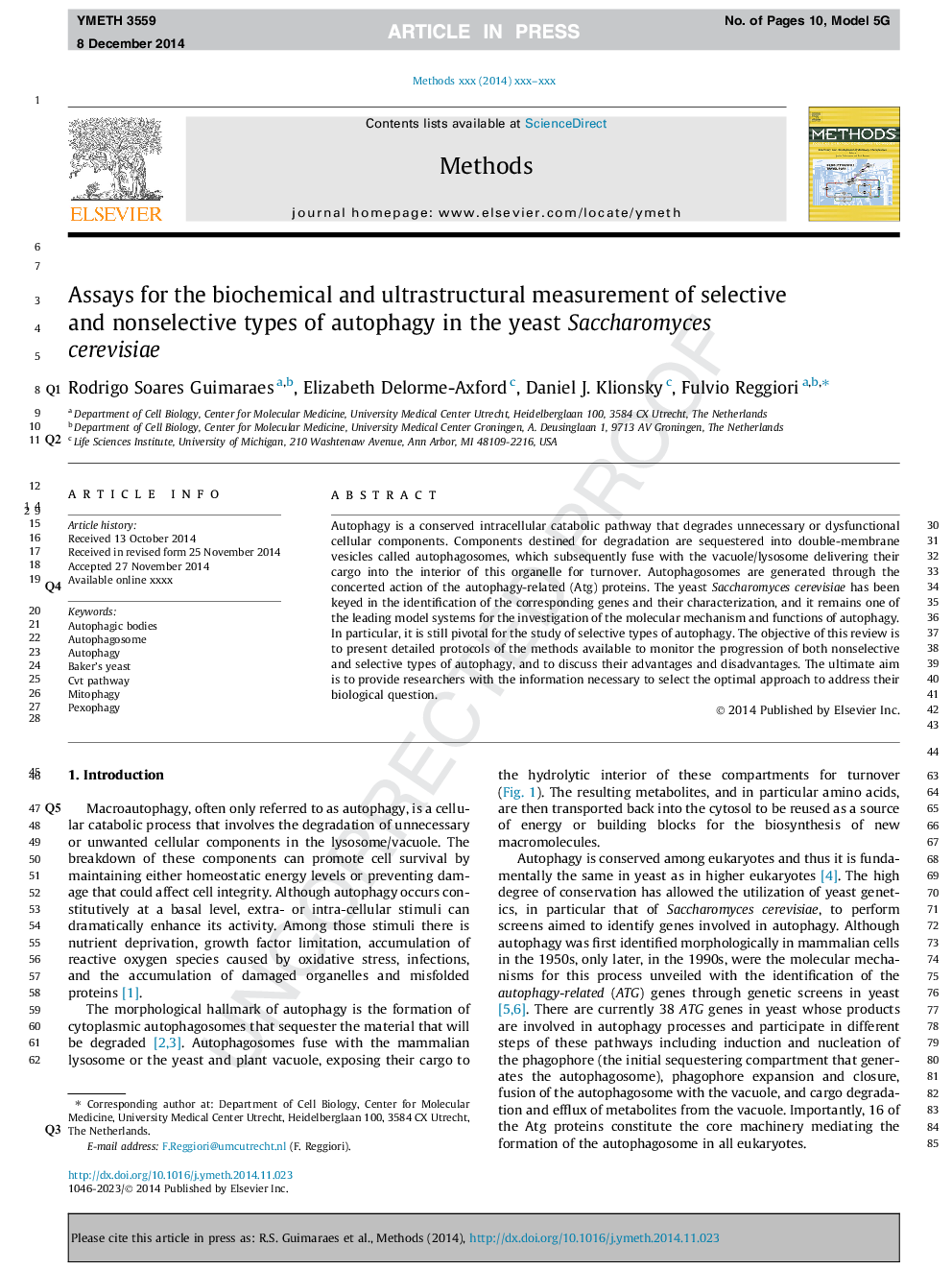| Article ID | Journal | Published Year | Pages | File Type |
|---|---|---|---|---|
| 8340688 | Methods | 2015 | 10 Pages |
Abstract
Autophagy is a conserved intracellular catabolic pathway that degrades unnecessary or dysfunctional cellular components. Components destined for degradation are sequestered into double-membrane vesicles called autophagosomes, which subsequently fuse with the vacuole/lysosome delivering their cargo into the interior of this organelle for turnover. Autophagosomes are generated through the concerted action of the autophagy-related (Atg) proteins. The yeast Saccharomyces cerevisiae has been key in the identification of the corresponding genes and their characterization, and it remains one of the leading model systems for the investigation of the molecular mechanism and functions of autophagy. In particular, it is still pivotal for the study of selective types of autophagy. The objective of this review is to present detailed protocols of the methods available to monitor the progression of both nonselective and selective types of autophagy, and to discuss their advantages and disadvantages. The ultimate aim is to provide researchers with the information necessary to select the optimal approach to address their biological question.
Related Topics
Life Sciences
Biochemistry, Genetics and Molecular Biology
Biochemistry
Authors
Rodrigo Soares Guimaraes, Elizabeth Delorme-Axford, Daniel J. Klionsky, Fulvio Reggiori,
